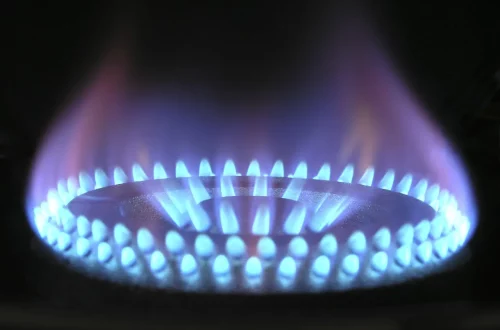
Understanding the Causes of Yellowish Color in the Roof of the Mouth
The appearance of a yellowish tint on the roof of the mouth can be a perplexing issue for many individuals. While the mouth is a space that often goes unnoticed in terms of health, changes in color can signal various conditions that may require attention. The roof of the mouth, or the palate, is an important part of the oral cavity that plays a vital role in speech and eating. Its health can reflect not just oral hygiene, but also systemic health issues.
Various factors contribute to changes in coloration within the oral cavity, including dietary habits, lifestyle choices, and underlying health conditions. Understanding these causes is essential for anyone who notices a yellowish hue in their mouth. This discoloration can occur due to benign reasons, such as the consumption of certain foods or beverages, but it may also indicate more serious health concerns that warrant further investigation.
In this article, we will delve into the primary causes of a yellowish coloration in the roof of the mouth, exploring everything from dietary influences to potential medical conditions. By gaining a better understanding of these factors, individuals can take informed steps toward maintaining their oral health and overall well-being.
Dietary Influences on Oral Coloration
One of the most common reasons for a yellowish hue on the roof of the mouth can be attributed to dietary choices. Foods and beverages that are rich in pigments can stain the oral cavity, leading to discoloration. For instance, consuming large quantities of turmeric, curry, or certain types of berries can result in a temporary yellow or brown tint on the palate.
Moreover, acidic foods and beverages, such as citrus fruits and sodas, can also contribute to changes in color. These items can erode the enamel of the teeth, making them more susceptible to staining from other foods. Furthermore, frequent consumption of coffee or tea can cause a buildup of tannins, which may lead to a yellowish appearance not only on teeth but also on the surrounding soft tissues, including the roof of the mouth.
In addition to staining foods, tobacco use is another significant contributor to discoloration. Smokers often experience a yellowish tint on the roof of the mouth due to the tar and nicotine present in tobacco products. Quitting smoking can improve oral health and may lead to a gradual return to the normal coloration of the palate.
Maintaining good oral hygiene is crucial in combating the effects of dietary influences. Regular brushing, flossing, and rinsing can help minimize stains and maintain the overall health of the oral cavity. Additionally, staying hydrated and rinsing the mouth after consuming staining foods or beverages can reduce their impact.
Possible Underlying Medical Conditions
While dietary factors are a common cause of discoloration, it’s essential to recognize that persistent yellowish coloration can be indicative of underlying medical conditions. One such condition is jaundice, which occurs when there is an excess of bilirubin in the bloodstream. This can happen due to liver dysfunction or other related health issues. In cases of jaundice, one might notice a yellowing of the skin and eyes, along with changes in the mucous membranes, including the roof of the mouth.
Another possible cause of yellowish discoloration is oral thrush, a fungal infection caused by an overgrowth of Candida yeast. This condition often presents with white or yellow patches on the mucous membranes, including the palate. Individuals with weakened immune systems, diabetes, or those taking certain medications are at higher risk for developing oral thrush. If left untreated, this infection can lead to more severe complications, making it crucial to seek medical attention if you suspect this condition.
Additionally, certain medications can lead to changes in oral coloration. For example, some antibiotics may cause a yellowish tint in the mouth as a side effect. It’s important to consult a healthcare provider if you notice any unexpected changes after starting new medications.
Recognizing the signs of these medical conditions is vital. If the yellowish color persists despite good oral hygiene and dietary changes, or if it is accompanied by other symptoms such as pain, swelling, or difficulty swallowing, it is imperative to seek medical advice. Proper diagnosis and treatment can help address any underlying issues effectively.
Oral Hygiene and Its Impact
Oral hygiene plays a crucial role in maintaining the health and appearance of the mouth, including the roof of the mouth. Neglecting regular cleaning can lead to the accumulation of plaque and bacteria, which can contribute to a yellowish tint. Plaque buildup can cause irritation and inflammation in the oral cavity, leading to discoloration.
Brushing the teeth and the roof of the mouth at least twice a day is essential for removing food particles and preventing plaque formation. Using a soft-bristled toothbrush and fluoride toothpaste can enhance cleaning effectiveness. Additionally, incorporating tongue scraping into your oral hygiene routine can help eliminate bacteria that may contribute to discoloration.
Flossing daily is equally important, as it removes debris from between the teeth and along the gumline that a toothbrush may miss. This practice not only contributes to overall oral health but also helps prevent gum disease, which can cause changes in oral coloration.
Using mouthwash can also help maintain oral hygiene. Antiseptic mouthwashes can reduce bacteria levels in the mouth and promote a healthier environment. However, it’s essential to choose alcohol-free mouthwashes, as alcohol can irritate the oral mucosa and lead to dryness, which may exacerbate discoloration.
Regular dental check-ups are vital for maintaining oral health. Dentists can provide professional cleanings that remove tartar buildup and can identify potential issues early on. If you notice persistent discoloration despite maintaining good oral hygiene, it is advisable to consult a dental professional for a thorough evaluation.
In conclusion, while a yellowish tint in the roof of the mouth can be caused by several factors, including dietary influences and oral hygiene practices, it is crucial to remain vigilant about any changes in coloration. Persistent discoloration may indicate underlying health issues that require medical attention.
**Disclaimer:** This article is not intended as medical advice. If you experience health concerns or persistent discoloration in your mouth, please consult a qualified healthcare professional for appropriate guidance and care.




